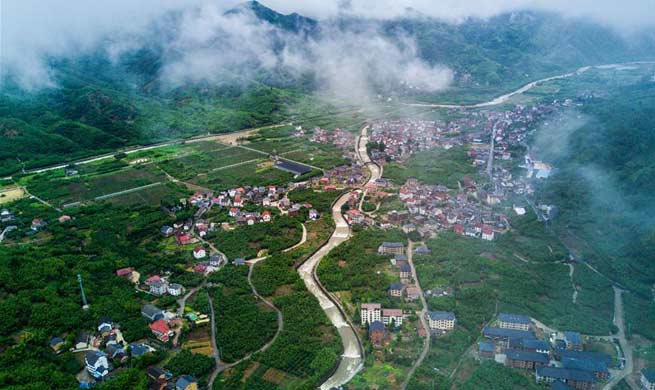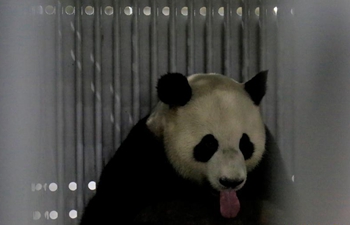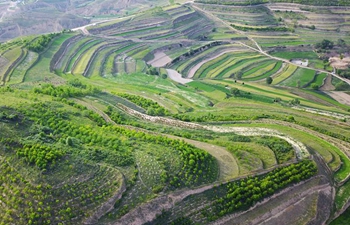SAN FRANCISCO, June 24 (Xinhua) -- A new study reveals the possibility that a specific protein binds to stretches of DNA, namely deoxyribonucleic acid, and pulls it into droplets that shield the genetic material inside from the molecular machinery of the nucleus that reads and translates the genome.
A host of proteins and other molecules sit on the strands of human DNA, controlling which genes are read out and used by cells and which remain silent.
This aggregation of genetic material and controlling molecules, called chromatin, makes up the chromosomes in our cell nuclei; its control over which genes are expressed or not is what determines the difference between a skin cell and a neuron, and often between a healthy cell and a cancerous one.
Parts of the genome are loosely coiled in the nucleus, allowing cells to access the genes inside, but large sections are compacted densely, preventing the genes form being read until their region of the genome is unfolded again.
These compacted regions, known as heterochromatin, are formed by a protein known as HP1-alpha and similar proteins.
The new study, by researchers at the University of California, San Francisco, tries to answer the question that how HP1-alpha segregates this off-limits DNA from the rest of the nucleus.
Graduate student Adam Larson of Geeta Narlikar, professor of biochemistry and biophysics and senior author of the study published this week in the journal Nature, was trying to purify HP1-alpha, and noticed that the liquid in his samples was growing cloudy.
For protein scientists, this is typically bad news, suggesting that proteins that should dissolve in water are instead clumping together into a useless mass.
Larson thought the clumps might actually be useful. Previous work had shown that the role of HP1-alpha is to sequester long strands of DNA into very small volumes.
What if this was exactly the sort of clumping he was seeing in the tube? He took the samples to the lab across the hall from Narlikar's, where Roger Cooke, professor emeritus of biochemistry and biophysics, helped him examine under the microscope what could have been just a tangled molecular mess.
Instead, Larson and Cooke saw clouds of delicate droplets floating around in the water, like a freshly shaken mix of oil and vinegar.
To see how and why the HP1-alpha formed droplets, the researchers produced different mutant versions of the protein, watching which separated out.
By watching which parts of the protein were important for forming droplets, and using X-rays to monitor changes in the protein's shape, they found that the protein nearly doubles in length when small phosphate residues are added in certain locations.
"The molecule literally opens up," Narlikar was quoted as saying in a news release. It exposes electrically charged regions of the protein, which stick together, turning dissolved pairs of proteins into long chains that clump together into droplets.
The fact that such a drastic change in shape comes from such a small modification may allow the cell to tightly regulate where and when HP1-alpha silences genes, Narlikar said, noting that "this provides a very simple explanation for how cells prevent access to genes."
HP1-alpha had a reputation as a difficult protein to work with: get any solution too concentrated, and the protein would clump out. But if the protein was supposed to clump, according to Narlikar, "a lot of things we couldn't explain started to make sense."

















